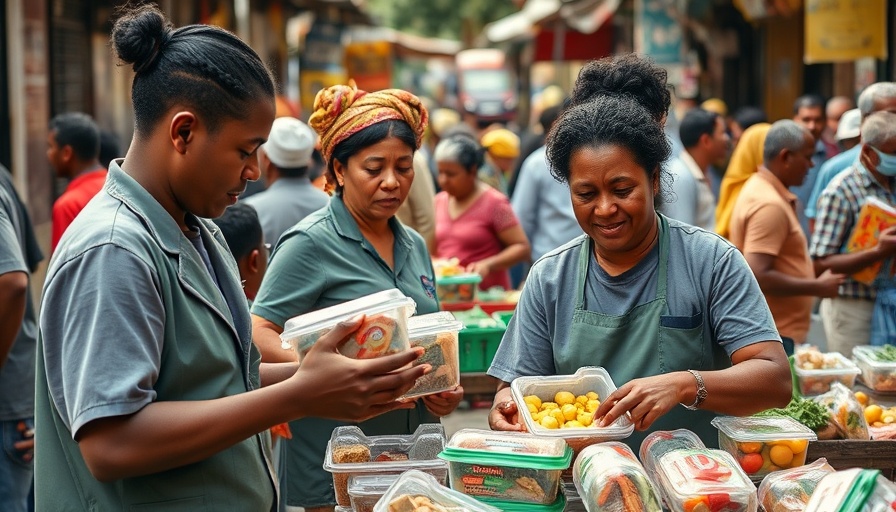
Transforming Food Waste into Community Good
As food lovers gathered at the annual Taste of Cincinnati festival, the event brought a delightful array of culinary experiences, but it also left behind a significant challenge: leftovers. Fortunately, a local group known as Last Mile Food Rescue is working hard to bridge the gap between excess food and community need, ensuring that perfectly good meals don’t end up in landfills.
Lending a Helping Hand
Last Mile Food Rescue is not just any food drive; it’s a heartfelt initiative fueled by volunteers like Erica Johnson, who passionately take on the task of collecting leftover festival food. “We give them trays, and we label them, and we bring them back to this van where they take care of the rest,” Johnson explained, highlighting the efficiency that this volunteer-driven model brings to the food redistribution process.
Through its partnership with the Cincinnati Regional Chamber, Last Mile has been effectively addressing food waste at the festival for three years. Chelsea York, vice president of events and experiences for the Chamber, mentioned, “It’s another way we can give back to the community and reduce the amount of waste from the event, making it more sustainable.” This collaboration emphasizes the importance of collective action in tackling pressing community challenges.
Food Insecurity vs. Food Waste
The CEO of Last Mile, Eileen Budo, shares an eye-opening insight: “If a quarter of wasted food is preserved through actions like what my organization does, then food insecurity could be eliminated.” This bold statement captures the double-edged nature of food waste; it is not just a waste of resources, but it is also a critical issue contributing to food insecurity. Last Mile’s work directly addresses this dilemma by reallocating surplus food to those most in need in the Greater Cincinnati area.
Rather than focusing on food deserts—a term that often invokes images of barren grocery aisles—Last Mile emphasizes that the food is available; it’s just in the wrong place. This viewpoint not only changes the narrative around food accessibility but opens the door for innovative solutions. Johnson frames her volunteer work as being akin to “Uber for food,” facilitating connections between surplus and need in a streamlined fashion.
Mobilizing Change through Technology
To further enhance their efforts, Last Mile has launched a mobile application that assists in coordinating their efforts. The app allows users to see where donations are available for pickup, complete with instructions for volunteers. By utilizing technology, Last Mile simplifies participation, making it accessible for those who want to help tackle food waste. Budo remarked, “We're working with well over 130 organizations all over Greater Cincinnati,” from soup kitchens to after-school programs, underscoring the vast network engaged in this mission to benefit those less fortunate.
Food Waste: An Easily Avoidable Problem
The conversation around food waste often highlights the shocking facts associated with it. In the U.S. alone, approximately 40% of food is wasted, translating to around $408 billion dollars each year. With community-based efforts like those led by Last Mile Food Rescue, organizations can actively combat this waste while simultaneously addressing local hunger needs.
Eileen Budo succinctly encapsulates the sentiment driving this initiative: “Food waste is a really dumb problem.” Her words resonate as a call to action for individuals and communities alike, encouraging a communal effort to shift how society views and handles leftovers.
Join the Movement
There’s an opportunity for everyone to contribute in this valuable effort. With ease-of-use at their fingertips through a mobile app and structured volunteer programs, champions of food redistribution can join Last Mile Food Rescue in their mission. Exploring how to yield maximum benefits from what is often viewed as waste opens avenues to empower local communities and foster sustainable practices.
If you are inspired by these impactful initiatives, consider volunteering with or donating to Last Mile Food Rescue, and help transform the narrative on food waste in your community. Every effort counts!
 Add Row
Add Row  Add
Add 




Write A Comment